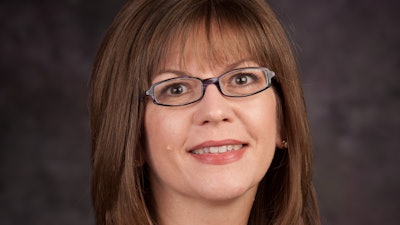Cutting across political party lines, an overwhelming majority of Americans see veterans’ services as a priority (Schaeffer, 2021). Given that less than 1% of Americans have served in the military, administrative leaders across all education sectors often have a learning curve. Military friendly is a common phrase used by organizations to communicate an appreciation of military service members (Kirchner, et al., 2020). However, to move beyond a slogan, community college leaders need to examine how they are creating bridges of empathy (Yelich Biniecki & Berg, 2000) and pathways for success (Kirchner & Yelich Biniecki, 2019) to serve active duty and veteran service members and their families.
 Dr. Susan M. Yelich Biniecki
Dr. Susan M. Yelich Biniecki
1) What does your staff think of when they think of an active-duty service member, a veteran, or a military family? Sometimes it is difficult for cultural outsiders to navigate how best to engage with military-connected individuals, and we may end up unintentionally dehumanizing students. Only focusing on trauma or heroism can project a learner as a damaged liability or a superhero. Neither of these images creates a holistic portrait of a human being. Therefore, helping staff unpack how they view military-connected learners as people through an appreciative rather than a deficit framework is a very important place to start. Acknowledging the diversity of military experiences through unassuming, nonintrusive conversation can create empathy with military-connected students throughout the organization. If your community college is struggling to have those conversations, outside facilitators can support you.
2) Who are your military-connected learners and how do you know? Although we have general demographics about veterans, such as approximately 15% are age 18 to 23 (Department of Veteran Affairs, 2018), closely examining who the military-connected learners are within your community college community is vital. The U.S. military shares a culture but has different sub-cultures within its branches. Some veterans have served in combat and some have not. At some institutions, veterans are more willing to self-identify than at others; therefore, understanding how you are addressing the diverse experiences of military-affiliated learners can create greater inclusion.
3) How do military-connected learners at your institution experience transition? This question addresses how military-connected learners experience the culture of the institution and the structures assisting them with transition. Although 82% of institutions have a designated point of contact for student veterans (Department of Veteran Affairs, 2018), determining how students find the point of contact and what their experiences are can provide valuable information for recruitment and retention. For example, within a student veteran center, diverse groups of veterans may experience inclusion and belonging differently. A veteran may have different structural needs than an active-duty service member or their spouse, who may continue to experience a permanent change of station (PCS), or move, and require accommodation for an internship at another location. Serving in the military is often a family effort; therefore, understanding how you are accommodating the family can support the service member as well. Establishing processes that seek to understand the need of each military-connected learner from a holistic viewpoint can inform persistence and retention.
4) How does your organization recruit and integrate military-connected staff? To create culturally responsive bridges and pathways, recruiting and integrating military-connected staff can help the organization learn in onsite roles such as admission and remote positions such as technical support. Another overlooked position for veterans is the role of instructor. For example, retired military officers have a master’s or doctoral degree and are embarking on a second career. These individuals often have a high level of expertise in a content area as well as leading teams effectively (Yelich & Berg, 2020).
Asking how an organization is creating bridges of learning and creating structures of personalized pathways with military-affiliated learners can provide important points of reflection for future action. Community college leadership can play a critical role in bridging the military – civilian divide, serving learners, and connecting communities.
Dr. Susan M. Yelich Biniecki serves as associate professor in the College of Education, Department of Educational Leadership, Adult Learning and Leadership Program., at Kansas State University.
The Roueche Center Forum is co-edited by Drs. John E. Roueche and Margaretta B. Mathis of the John E. Roueche Center for Community College Leadership, Department of Educational Leadership, College of Education, Kansas State University.






















